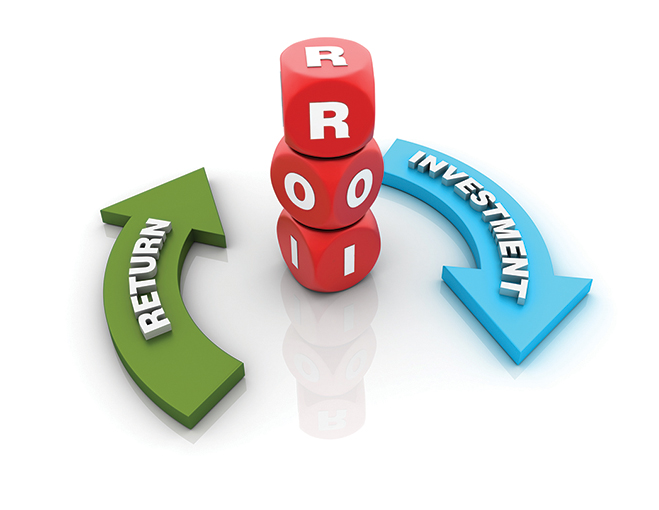Evaluating Safety’s Return on Investment
by Julia Kunlo, CSP, Tim Neubauer, MSOSH, CSP
When discussing corporate safety, it is common to hear catchy taglines such as:
- “Safety is #1”
- “Safety is our top priority”
- “Safety above all else”
- “Safety first”
As an occupational safety consultant at Evolution Safety Resources, I am thrilled to hear that organizations are placing a high value on safety when considering their daily operations. The fact of the matter, unfortunately, is that the majority of these taglines are just not true. Businesses do not focus on safety first, because they must focus on profitability first. And while business owners should choose to only be profitable so long as they are safe, we understand that safety cannot realistically be seen as a line item without a budget. Considering the financial implications, how can companies protect their bottom line while also protecting their employees?
 The information provided in this article should be used as a tool for deciding which components of a safety program to prioritize when all components cannot be reasonably afforded.
The information provided in this article should be used as a tool for deciding which components of a safety program to prioritize when all components cannot be reasonably afforded.
In 2017, the average cost per workplace injury was $39,000 — this figure includes wage losses, medical expenses, and administrative expenses (Work Injury Costs, n.d.). This statistic highlights the fact that companies, who must focus on profitability, cannot ignore the importance of a safety program. In fact, “various studies reflect correlations between proactively investing in occupational safety and health and experiencing lower incident rates and higher profit margins” (Druley, 2019).
Considering that safety has a budget (like all other components of business), companies must be strategic in how they spend their hard-earned dollars. So, what safety program elements will give you the biggest bang for your buck in terms of safety impact? To answer this question, we must consider each component of a safety program’s return on investment (ROI). In 2001, research was conducted to understand the benefit-to-cost ratio of various safety program components. This research measured the resources required to establish and maintain each program element as well as each element’s financial impact on the business (Jervis & Collins, 2001). When ranking highest return on investment to lowest return on investment, program elements were listed as followed:
1. Hazard prevention and control
- Assigned personnel/staff, access to and utilization of certified safety professionals, first aid/CPR personnel on all shifts, use of engineering and administrative controls, safety discipline system, etc.
2. Management leadership and employee involvement
- Integration of safety into business planning, written policies and programs, assigned safety responsibilities at all levels, readily available resources for safety efforts, annual safety program auditing, programs for continuous improvement, etc.
3. Worksite analysis
- Activity hazard analysis (AHA), workplace safety inspections, written hazard reporting systems, incident investigations, trend analysis, etc.
4. Review of documentation
- Annual review of written safety program documentation
5. Safety and health training
- Training on safety responsibilities, job-specific hazards, PPE use/maintenance, and emergency drills
The highest-ranking program element, hazard prevention and control, is a broad term. What does that mean to an organization? According to the study, this category is mainly defined as having access to designated safety professionals. When analyzing the results, the authors proposed that “without core safety staff, the company will not have the resources needed to conduct hazard analyses, develop written safety rules, monitor regulatory compliance, and track corrective actions” (Jervis & Collins, 2001). When considering return on investment and safety efforts, the study finds that having a strong safety team and/or representative is the best financial decision a company can make. This is why Evolution Safety Resources is passionate about what we do — we bring value to our customers by providing expertise within the field of occupational safety and health. From procedure development and field inspections to long-term staffing and incident response and case management, we are ready to meet all of your workplace safety needs.
A commitment to workplace safety is something all companies should pledge for moral reasons. It is the right thing to do. Nevertheless, it is misguided to believe this commitment can be made without regard for a company’s financial future. A sound occupational safety and health program benefits the bottom line by reducing worker’s compensation claims, limiting litigation expenses, avoiding regulatory fines, lowering insurance premiums, qualifying for government contracts, and, ultimately, winning bids. Other program benefits are difficult to quantify, such as increased employee retention and improved overall morale. When considering the plethora of benefits related to a comprehensive safety program, companies with tight budgets should evaluate return on investment when budgeting their safety dollars.
Druley, K. (2019, January 4). The ROI of safety. Retrieved from https://www.safetyandhealthmagazine.com/articles/17819-the-roi-of-safety.
Jervis, S., & Collins, T. R. (2001). Measuring Safety’s RETURN ON INVESTMENT. (Cover story). Professional Safety, 46(9),
18. Retrieved from http://search.ebscohost.com.libraryresources.columbiasouthern.edu/login.aspx?direct=true&db=bsu&AN=5154027&site=eds-live&scope=site
Work Injury Costs. (n.d.). Retrieved from https://injuryfacts.nsc.org/work/costs/work-injury-costs/
Evolution Safety Resources is an occupational safety consultation firm based out of Raleigh, North Carolina. Visit our website (www.evolutionsafetyresources.com) to learn more about our services – we are proud of what we do and would love to be of assistance.







